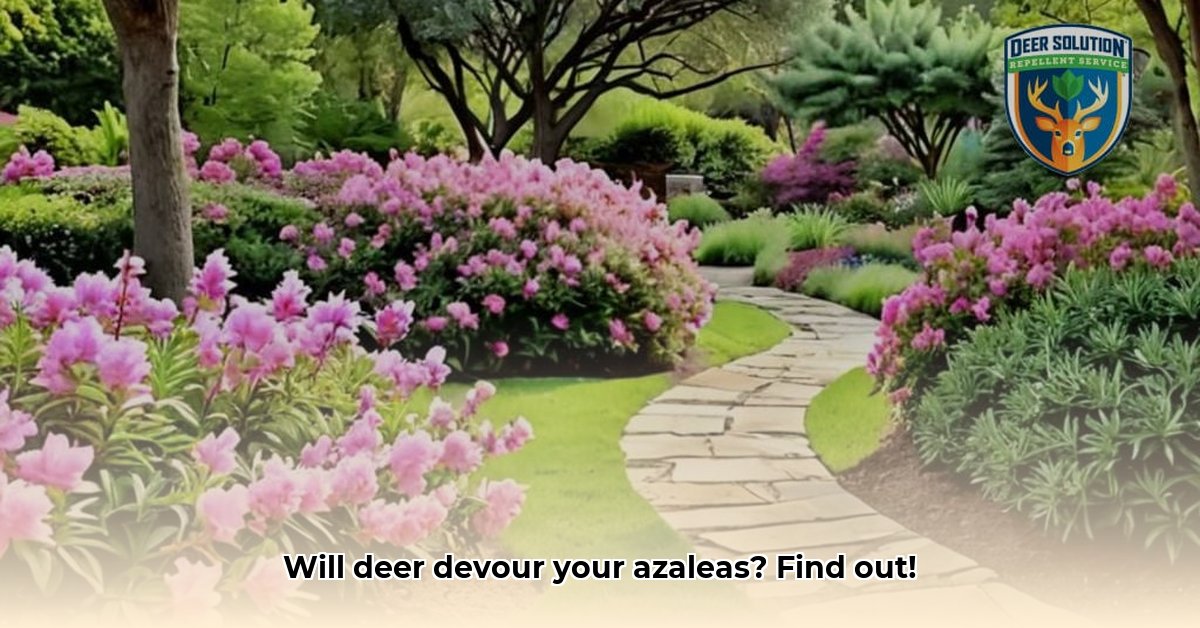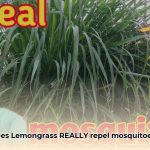Outsmarting Deer and Saving Your Azaleas
Deer can be a gardener’s worst nightmare, and azaleas, unfortunately, are often on their menu. This comprehensive guide provides practical strategies to protect your prized azaleas from becoming a deer buffet.
Understanding Deer Behavior and Azalea Preferences
Deer are opportunistic feeders, meaning they’ll eat what’s readily available and easy to access. Azaleas, especially new growth and flower buds, are appealing to deer, especially during seasons when other food sources are scarce. While azaleas may not be their absolute favorite, they provide a convenient snack. Even some “deer-resistant” varieties may be nibbled on if a deer is hungry enough. This might be influenced by the concentration of grayanotoxins, which are present in all azaleas and rhododendrons. While these toxins can cause digestive upset in deer if consumed in large quantities, smaller amounts may not deter them and may even be attractive. Understanding their feeding patterns and preferences is crucial for developing a successful defense strategy.
Why Deer Target Azaleas
Several factors contribute to a deer’s fondness for azaleas:
- Nutritional Value: New azalea growth is rich in nitrogen, a nutrient deer need.
- Accessibility: Azaleas in suburban gardens are often easy for deer to reach.
- Seasonal Availability: During late winter and early spring, when other preferred food sources are scarce, azaleas become a convenient meal.
Recognizing Deer Damage
Deer damage typically appears as ragged edges on leaves and broken branches. Since deer are crepuscular animals, most active at dawn and dusk, you might not see them in action. However, the evidence they leave behind is usually quite clear.
Effective Strategies for Protecting Azaleas
Protecting your azaleas requires a multi-pronged approach, combining several strategies for the best results.
1. Repellents: Making Azaleas Unappetizing
Repellents deter deer by making your azaleas smell or taste unpleasant. There are two main categories:
- Commercial Repellents: Products like Nature’s MACE Deer Repellent contain putrescent egg solids, proven effective in deterring deer. Other common active ingredients include capsaicin (the spicy component of peppers), dried blood meal, and ammonium soaps. Apply these according to package directions, reapplying after rain. Some experts suggest rotating different repellent types to prevent deer from becoming accustomed to one scent or taste.
- DIY Repellents: Homemade repellents are a cost-effective option. Consider hanging bars of strongly scented soap near your azaleas, sprinkling hot pepper flakes around the plants, or using a mixture of putrescent egg solids (following safe handling guidelines.) Reapply these frequently, as they can wash off or break down quickly.
2. Fencing: Creating a Physical Barrier
Fencing offers the most reliable protection, though it can be a significant investment. Deer are excellent jumpers, so a fence should be at least eight feet high. Consider burying a portion of the fence underground to prevent deer from digging underneath.
- Types of Fencing: Woven wire, metal mesh, and electric fencing are effective choices. For smaller areas or individual shrubs, chicken wire or plastic mesh can be less expensive alternatives.
- Installation Tips: Ensure proper installation to maximize effectiveness. Consult with a fencing professional for larger projects.
3. Deer-Resistant Plants: Strategic Landscaping
Planting deer-resistant species around your azaleas can create a natural barrier. Deer tend to avoid plants with strong scents, prickly foliage, or fuzzy textures.
- Fragrant Herbs: Rosemary, lavender, mint, and thyme can deter deer while enhancing your garden’s beauty.
- Thorny Shrubs: Barberry, juniper, and holly create a prickly barrier.
- Other Deer-Resistant Options: Daffodils, foxgloves, bleeding hearts, and lamb’s ear are less appealing to deer.
| Plant | Deer Resistance | Notes |
|---|---|---|
| Daffodils | High | Toxic to deer |
| Marigolds | High | Strong scent deters deer |
| Lavender | High | Aromatic foliage repels deer |
| Lamb’s Ear | High | Fuzzy texture unappealing to deer |
| Rosemary | High | Strong fragrance deters deer |
| Thyme | High | Aromatic foliage is unappealing to deer |
4. Deterrents: Startling Deer
Motion-activated sprinklers, lights, or noisemakers can startle deer away from your azaleas. These are most effective when used with other deterrent strategies.
- Motion-Activated Sprinklers: These deliver a burst of water when deer approach.
- Lights and Noisemakers: Sudden flashes of light or loud noises can scare deer away.
5. Proper Pruning: Reducing Temptation
Regular pruning helps maintain azalea health and can make them less attractive to deer by reducing the amount of tender new growth. Prune after blooming to avoid removing flower buds.
Choosing the Right Strategy
The most effective approach often involves a combination of strategies tailored to your specific situation.
| Deterrent Method | Pros | Cons |
|---|---|---|
| Fencing | Highly effective, long-lasting | Can be expensive, may not be aesthetically pleasing |
| Repellents | Relatively affordable, easy to apply | Needs regular reapplication, effectiveness can vary |
| Companion Planting | Natural, aesthetically pleasing | May not be fully effective on its own |
| Motion-Activated Sprinklers | Can be effective, covers a wider area | Can be expensive, needs water source, may not be suitable for all climates |
| Deer-Resistant Planting | Creates a natural barrier, enhances the garden | Requires planning and ongoing maintenance |
Consider factors like the size of your garden, local deer population, and your budget when choosing your strategy.
Regional Variations in Deer Behavior
Remember that deer behavior and feeding preferences can vary regionally. Contact your local university extension service or a reputable garden center for insights into deer behavior in your area and recommendations for the most effective strategies. They can also offer advice on appropriate azalea varieties for your specific climate and soil type. Ongoing research into deer behavior continues to provide new insights and potential solutions. Keep learning and adapting your methods for optimal deer management in your garden.
- Dora the Explorer Wipe-Off Fun: Safe & Mess-Free Activities for Little Explorers - April 18, 2025
- Does Lemongrass Repel Mosquitoes? Fact vs. Fiction + How to Use It - April 18, 2025
- Do Woodchucks Climb Trees?Fact vs. Fiction - April 18, 2025










